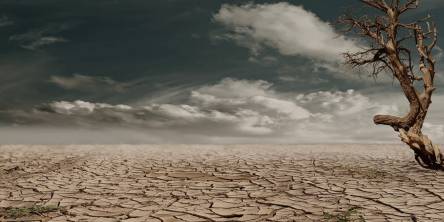Tips for Using Weather Radar Apps on Your Smartphone

Weather radar applications have become a must-have tool for individuals looking to stay updated on weather conditions. These handy apps offer real-time details on precipitation storms and other weather events at your fingertips.
Whether you're gearing up for a weekend hike or deciding whether to grab an umbrella before heading out, weather radar apps can make a difference. Once you understand how weather radar works, it’s time to leverage the apps with these tips.
Weather Radar: What is Radar Data Interpretation
When using a weather radar app, it's essential to remember that it utilizes data gathered by weather radar stations worldwide. This data is then used to create representations that show weather phenomena such as rain or snow. It's crucial to understand that the colors on the radar maps correspond to varying levels of precipitation intensity. For instance, red or purple areas indicate rainfall, while green or blue areas suggest precipitation. You can accurately interpret the weather heading toward your area by grasping these color codes.
Leverage Notifications and Alerts
Although manually checking the radar map can be beneficial, receiving alerts directly on your smartphone is always more convenient. Many weather radar apps allow you to customize notifications and alerts to stay informed without checking the app. You can set up personalized alerts based on criteria like weather warnings for lightning strikes, wind gusts, hailstorms, or general rain forecasts. This way, you'll receive alerts about hazards in your area and plan accordingly.
Modern weather radar apps typically offer overlay layers in addition to reflectivity maps. These layers provide information such as storm velocity ( for tracking fast-moving storms), precipitation type (rain or snow), predicted storm paths, and more.
Check Different Layers
Use these layers by turning them on or off based on your needed information. For example, if you're heading to the beach and want to check for storms or lightning strikes, overlaying storm velocity and data layers could be helpful—experiment with layers to see what works best for you.
Adjusting the radar range and refresh time can significantly impact weather radar apps' usefulness. Tweak the radar range for visibility depending on your proximity to the predicted weather event.
Also, make sure to check the app's settings. The refresh interval decides how often the app updates its radar images. A refresh time boosts real-time accuracy but might use data and battery power, so aim for a balance that fits your needs.
Discover Unique Features in the App
Different weather radar apps have features that can improve your experience or give information. Explore these features in your chosen app to make the most of it. For instance, some apps offer radar forecasts that let you see precipitation patterns for hours or days. Others provide radar images for studying weather events or trends in an area. By getting familiar with these features, you'll gain insights into weather patterns.
Select a Trustworthy and Precise Weather Radar App
With so many weather radar apps on app stores, it's crucial to pick one that's dependable and offers accurate details. Look for apps with user feedback and high ratings. Consider sources that recommend radar apps. Feel free to try out apps and compare how well they work before deciding on one that meets your needs.
Utilize User Submitted Reports
Many weather radar apps include a section where users can share their weather observations. This allows you to access real-time data from people experiencing the weather firsthand in certain areas. Checking these reports can give you insights into conditions like heavy rain or strong winds, which may not be visible on radar alone.
Conclusion
Thanks to weather radar apps, it's now easier than ever to keep track of weather conditions on your smartphone. You can make decisions based on accurate real-time data by following these suggestions—such as interpreting radar data using notifications and alerts, exploring layers of information, adjusting radar settings, and taking advantage of app features.
Similar Articles
The record-breaking cold rages on, bringing icy blizzard conditions along with it. Before too long, we will be facing summer heat, thunderstorms, and tornadoes. The truth is that you should always be preparing your home and family for weather emergencies—that’s the thing about those situations, they often strike without warning.

